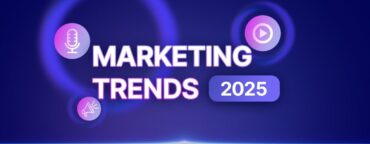Overview
Their role goes beyond transmitting data: they are driving the digital revolution. This revolution is disrupting our modes of communication, our productivity, our societies, the boundaries of knowledge, and human relationships.
Understanding the technological evolution from printing to AI means grasping our past and our future.
This article explores the rapid evolution of information and communication technologies, from their beginnings to today’s technology and their impact on our lives.
This historical and prospective journey shows how technology influences and unites our world.
1. At the Origins: A Brief History of Information Technologies
The history of information technologies begins with speech, the universal tool of early humans to transmit knowledge, stories, and emotions. For millennia, orality was the only way to transmit knowledge, a rich but fragile tradition in the face of oblivion.
Next, writing, a quiet and profound revolution. By inscribing signs on durable materials, man fixed knowledge to make it a collective memory spanning time and space.
The real transformation occurred with the invention of the printing press by Johannes Gutenberg in the 15th century.
In the past, books were painstakingly reproduced by monks in monasteries, solely for the benefit of a cultured elite. The printing press shattered the wall of exclusivity. The doors of knowledge opened to all, even the most curious.
This work completely disrupted social and cultural norms, freeing ideas to dance with unprecedented freedom, spreading at a speed and on a scale never seen before.
It was in this precise location that the very first large-scale information technology flourished, laying the foundations for our contemporary era.
The 19th century saw another technological marvel emerge with the advent of the telegraph. Finally, words could travel freely beyond the boundaries of space. Words traveled at the speed of light, crossing vast distances in the blink of an eye, thereby transforming the landscape of business, conflict, and alliances. It was like giving the world a kind of nervous system capable of transmitting impulses over long distances.
Shortly after the advent of the telephone, closely followed by that of the radio, near-instant communication became a familiar reality.
This moment symbolized the progressive union between information technology and communication technology to form a vast global exchange network.
In the 20th century, television made its appearance in homes, symbolizing the advent of popular culture. For the first time, millions of people simultaneously shared the same images, the same stories, and the same information. It paved the way toward an increasingly interconnected society where the media dictated opinions, trends, and even social interactions.
The advent of the Internet at the end of the 20th century marked a major turning point between the technology of the past and today.
This digital revolution has profoundly transformed technology in our lives, connecting the world like never before and facilitating instant exchanges of information.
Technology today erases borders, offers a universal platform, and revolutionizes both communication and commerce thru e-commerce.
These advancements have integrated into the technologies of daily life, while also posing crucial challenges related to privacy protection and the regulation of personal data, essential issues in today's technology.
Period | Key Invention | Impact |
15th century | Printing press | Mass dissemination of knowledge |
19th century | Telegraph | Fast long-distance communication |
20th century | Television | Birth of mass culture |
Late 20th century | Internet | Global interconnection and universal access to information |
Table: Key Inventions and Their Impact on the History of Technology in Our Lives
At each of these major stages, the world has transformed. These innovations bear witness to an incessant human quest: that of transmitting, sharing, and connecting.
Each advancement has opened new horizons, built bridges between individuals, and created ever-larger communities. These historical ruptures, with their power and scope, were as many introductions to the digital revolution which, with today's technology, is leading us into a new era of interconnection and transformation.
In fact, the advent of printing marked the first major surge in the dissemination of knowledge, a social upheaval equivalent to the transformation that technology represents before and today.
2. The rise of ICT in the 20th century: between information and communication:
The post-war period marks the beginning of modern computing with the emergence of the first computers. Over the decades, these machines evolved, from gigantic mainframes to the democratization of the PC in the 1980s.
It was during this period that the term "information communication technologies" became established, reflecting the rapid convergence of the two fields.
The birth of the Internet, initially a military network (ARPANET), becomes a mass phenomenon with Web 1.0: computers, connected to each other, exchange unprecedented amounts of data. Then, mobile phones and smartphones ushered in the era of universal connectivity, where everyone carries in their pocket a personal extension of all ICT.
As the UNESCO report on the information society explains: "By 2025, Internet penetration will have exceeded 90% in most developed economies and more than 60% globally."
At the dawn of the new millenium until the mid-2020s, the proliferation of mobile connections and high-speed internet propelled the digital world to the forefront, thereby disrupting social, economic, and cultural interactions.
3.The digital revolution: a global paradigm shift
The digital revolution is disrupting established codes on a global scale and is not just changing today's technology; it is transforming the entire world by shifting it from analog to digital.
In our time, data travels at the speed of light, instantly guided by increasingly sophisticated algorithms.
This disruption completely overturns economic patterns and highlights platforms (Uber, Airbnb…) that democratize online services (Spotify, Netflix…) and radically transform the value chain in all sectors.
Social media spreads trends at lightning speed, instant messaging strengthens connections, and the attention economy alters our perception of time.
Some notable examples of digital disruptions:
The CD has been supplanted by Spotify, transforming music into an omnipresent, constantly accessible service.
The cloud is the ally of remote work, orchestrating global collaboration with unprecedented freedom.
Twitter/X and TikTok immerse us in an ocean of continuous information at all times.
This digital revolution is emerging as the matrix of the contemporary era, creating both new opportunities and unprecedented challenges.
4.Current information and communication technologies (ICT):
Today, the broad sector of information and communication technologies includes:
- Cloud computing (virtual environments for storing and processing data),
- 5G (ultra-fast mobile connectivity),
- Connected objects (Internet of Things),
- Big data (massive analysis of structured and unstructured data),
- Artificial intelligence (AI).
Thanks to artificial intelligence, companies can now automate data analysis and dissemination, paving the way for more informed decision-making and increased value creation.
Indeed, according to Eminence, "76% of marketers have already adjusted their strategy to incorporate artificial intelligence," a sign of massive adoption in the field.
Cybersecurity stands as a vigilant guardian at the heart of ICT: data protection, combating cyberattacks, strict compliance management.
Key data for 2025: In Switzerland, Internet penetration reaches 99%, with almost permanent connectivity (an average of 6 hours per day on smartphones).
AI-powered marketing is expected to generate more than 2.6 trillion euros in revenue worldwide.
5. Issues and challenges of ICT today:
Information and communication technologies are progressing unevenly: in Northern countries, digital inclusion is advancing, but a digital divide persists elsewhere, fueled by the generational gap, lack of skills, and unequal access to infrastructure.
Among the major obstacles are:
The increasing technological dependence and issues of digital sovereignty,
The essential ethical challenges: respect for the GDPR, preservation of privacy, risks related to information bubbles and deepfakes.
The famous Cambridge Analytica case revealed the extent of the manipulation of personal data by web giants.
This event was a trigger for the European Union, which implemented binding laws such as the Digital Services Act and the AI Act to regulate this rapidly evolving sector.
"90% of the world's data has been created in the last two years – a figure that alone illustrates the explosion of information and communication technology (ICT)."
6. What future for information and communication technologies?
Tomorrow, data and artificial intelligence will profoundly shape our society: from tailored services to automated city management, a world of opportunities opens up to us, with no apparent limits.
The digital revolution is paving the way for immersive communications: metaverse, augmented reality, neural interfaces, so many technologies that will transform our human experience.
Health, education, democracy, and all sectors will be affected. As Tim Berners-Lee, the inventor of the Web, points out: "The Web was designed as a universal space [...]. We must ensure that it remains open, accessible, and reliable. »
Subscribe to our newsletter and gain access to strategic insights, exclusive analyses, and expert tips to enhance your online presence.
Conclusion
From papyrus scrolls to the blockchain, the history of technology in our lives is marked by the same quest: to transmit ever faster, ever further, ever more precisely.
Today, technology in our lives and communication technology, united under the banner of information and communication technologies, mark the culmination of a dynamic that has spanned several millennia. The digital revolution embodies the latest transformation to date, irrigating every aspect of our societies, from the intimate to the universal.
Information and communication technologies are not limited to mere tools; they have become indispensable actors, reshaping human interactions, reinventing social standards, and boosting creativity on a global scale.









